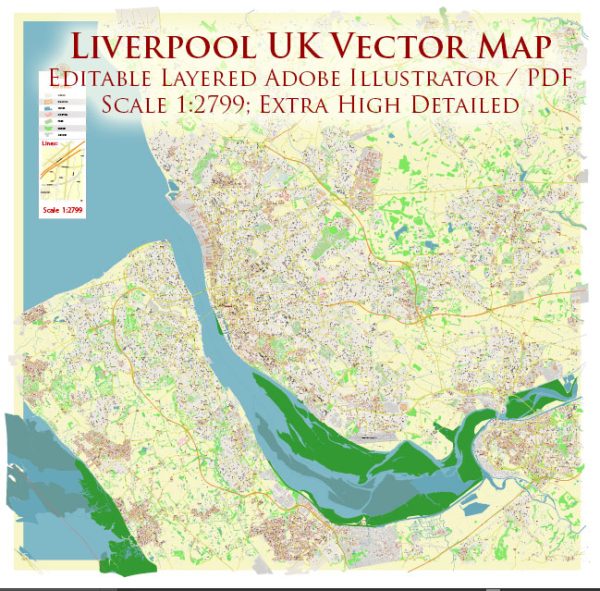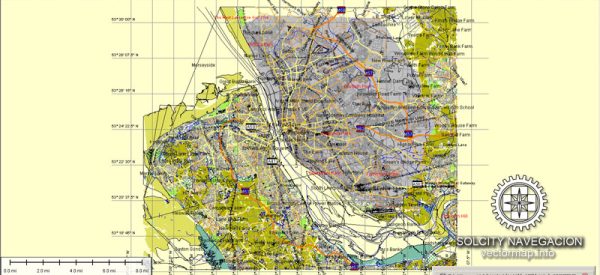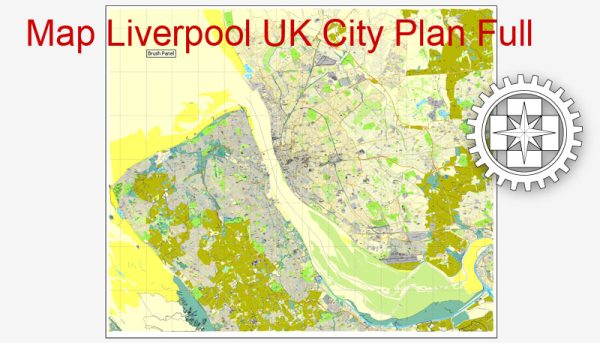A general overview of the infrastructure in Liverpool, UK. Vectormap.Net provide you with the most accurate and up-to-date vector maps in Adobe Illustrator, PDF and other formats, designed for editing and printing. Please read the vector map descriptions carefully. Here are some key aspects of Liverpool’s infrastructure:
- Transportation:
- Roads: Liverpool has a well-developed road network, with major highways connecting the city to other parts of the UK.
- Public Transportation: The city has an extensive public transportation system, including buses and trains. Merseyrail operates the local train services, connecting Liverpool with surrounding areas.
- Airport: Liverpool John Lennon Airport serves as the primary airport, providing both domestic and international flights.
- Ports:
- The Port of Liverpool is one of the major ports in the UK, playing a crucial role in trade and commerce. It handles various goods and has facilities for both cargo and passenger ships.
- Rail Network:
- Liverpool Lime Street is the main railway station in the city, connecting Liverpool to other major cities in the UK.
- Education:
- Liverpool has several universities and educational institutions, contributing to a well-educated workforce.
- Healthcare:
- The city has hospitals and healthcare facilities to cater to the medical needs of its residents.
- Utilities:
- Liverpool has a well-established system for water supply, sewage, and waste management.
- Cultural and Recreational Facilities:
- The city is known for its cultural and recreational amenities, including theaters, museums, and sports facilities.
- Housing:
- Liverpool has a diverse range of housing options, including apartments, houses, and historic buildings.
- Economic Hubs:
- The city has economic hubs, business districts, and industrial areas contributing to its economic development.
- Renewable Energy:
- Liverpool has been making efforts to incorporate renewable energy sources into its infrastructure, promoting sustainability.




 Author: Kirill Shrayber, Ph.D.
Author: Kirill Shrayber, Ph.D.